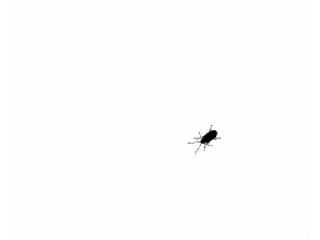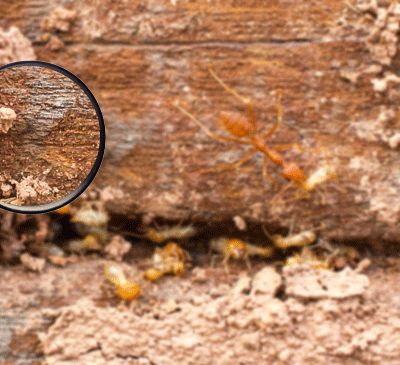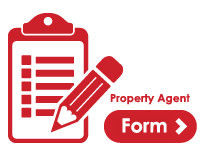PRE-PURCHASE TIMBER PEST INSPECTION AND REPORT AS 4349.3-2010
Prior to the purchase of your property a detailed timber pest inspection must be undertaken to ensure your new property is free from termites and pests. Our Pre-Purchase inspection report is detailed and easy to read, covering past/present termite activity and damage, termite treatment recommendations, advice on limiting the risk of termite infestation and areas of the property that are conducive to termite attack. Pre-Purchase reports also include details on any areas within the property showing mould, damp, wood/fungal decay, and wood. Pests Out WA utilise the latest technology in termite detection, namely Termatrac advanced technology. The The Termatrac T3i All Sensor is the most accurate and non-invasive detector available. The unique 3-in-1 design incorporates Termatrac’s patented radar technology, relative and direct moisture sensor as well as a thermal sensor for extra confidence. The T3i All Sensor was designed to help operators locate, confirm and track the presence and extent of termite and other pest activity. In conjunction with the T3i Certification Training that is provided to all T3i owners and operators, the T3i device is simple and easy to use with pinpoint accuracy.
Pests Out WA carry out Pre-Purchase Timber Pest Inspections to Australian Standards 4349.3-2017, which looks at Termites, Timber Decay and Borers of Seasoned Timbers.
Our knowledge and continued education of Timber Pest biology, lifecycles, habitats and ecology make us one of the leaders in Timber Pest Inspections and our technicians are trained to Asset pest Management level 3. We work closely with real estate agents and can arrange inspections with the current property owner or collect and deliver keys.
Upon request, we can send you the report on the same day that the inspection has taken place, or otherwise usually within 48 hours.
Pre-purchase timber pest and timber pest inspections, are carried out in accordance with Australian Standard AS 4349.3-2017 Inspection of buildings Part 3: Timber pest inspections. The purpose of these inspections is to provide advice about the condition of the property concerning timber pest activity.
Termite inspections are carried out in accordance with AS 3660.2-2017 Termite management Part 2: In and around existing buildings and structures. AS 3660.2-2017 states that termite inspections are not recommended for pre-purchase inspections.
- All inspections will be a non-invasive visual inspection and will be limited to those areas and sections of the property to which reasonable access is both available and permitted on the date and time of Inspection.
- The inspector may use a probe or screwdriver to tap and sound some timbers and may use a sharp knife to carry out some `splinter testing' on structural timbers. Splinter testing will not be carried out where the inspection is being carried out for a client who is a purchaser and not the owner of the property being inspected. The inspector may use a moisture meter to check moisture levels in walls that back onto wet areas such as showers etc. Other than these areas the moisture meter will not be used on other surfaces except where the visual inspection indicates that there may be a need to further test the area.
- The inspection will not involve any invasive inspection including cutting, breaking apart, dismantling, removing or moving objects including, but not limited to, roofing, wall and ceiling sheeting, ducting, foliage, mouldings, debris, roof insulation, sarking, sisalation, floor or wall coverings, sidings, fixtures, floors, pavers, furnishings, appliances or personal possessions.
- The inspector can not see or inspect inside walls, between floors, inside skillion roofing, inside the eaves, behind stored goods in cupboards, in other areas that are concealed or obstructed. Insulation in the roof void may conceal the ceiling timbers and make inspection of the area unsafe. The inspector will not dig, gouge, force or perform any other invasive procedures. An invasive inspection will not be performed unless a separate contract is entered into.
- If the property to be inspected is occupied then you should be aware that furnishings or household items may be concealing evidence of Timber Pests, which may only be revealed when the items are moved or removed. In some case the concealment may be deliberate.
- If you are the purchaser and not the owner of the property to be inspected then you should obtain a statement from the owner as to any timber pest activity or damage to the property known to them and what, if any, treatments have been carried out to the property. It is important to obtain copies of any paperwork issued and the details of any repairs carried out. Ideally the information obtained should be given to the inspector prior to the inspection being conducted.
Scope of the inspection and report
- In the case of Pre-purchase Timber Pest Inspections or Timber Pest Inspections in accord with AS 4349.3- 2010 the inspection and resulting report will be confined to reporting on the discovery, or non discovery, of infestation and/or damage caused by subterranean and dampwood termites (white ants), borers of seasoned timber and wood decay fungi (rot), present on the date and time of the Inspection.
- Inspection will not cover any other pests and the report will not comment on them. Dry wood termites (Family: Kalotermitidae) and European House Borer (Hylotrupes bujulus Linnaeus) are excluded from the inspection.
- The inspection will report any evidence of a termite treatment that happens to be found. Where evidence of a treatment is reported then the you should assume that the treatment was applied as a curative and not as a preventative.
- Mildew and non wood decay fungi are commonly known as Mould are not considered a Timber Pest but may be an indicator of poor ventilation or the presence of termites, wood decay or water leaks. Mould and their spores may cause health problems or allergic reactions such as asthma and dermatitis in some people.
Limitations
- Nothing contained in the report will imply that any inaccessible or partly inaccessible area(s) or section(s) of the property are not, or have not been, infested by termites or timber pests. Accordingly the Report will not guarantee that an infestation and/or damage does not exist in any inaccessible or partly inaccessible areas or sections of the property. Nor can it guarantee that future infestation of Timber Pests will not occur or be found.
- If the property to be inspected is occupied then you must be aware that furnishings or household items may be concealing evidence of problems, which may only be revealed when the items are moved or removed.The report will not and cannot state the extent of any timber pest damage. If any evidence of Timber Pest activity and/or damage resulting from Timber Pest activity is reported either in the structure(s) or the grounds of the property, then you must assume that there may be some structural or concealed damage within the building(s). Damage may only be found when wall linings, cladding or insulation are removed to reveal previously concealed timber.
Safe and reasonable Access
- The Standard AS4349.3-2010 provides information concerning safe and reasonable access. Only areas where reasonable and safe access is available can be inspected. Access will not be available where there are safety concerns, or obstructions, or the space available is less than the following:An invasive Timber Pest Inspection should be carried out and you should arrange for a qualified person such as a Builder, Engineer, or Architect to carry out a structural inspection and to determine the full extent of the damage and the extent of repairs that may be required.
Determining the extent of Damage
- Roof void - the dimensions of the access hole must be at least 500mm x 400mm, and, reachable by a 3.6M ladder, and, there is at least 600mm x 600mm of space to crawl;
- Roof exterior - must be accessible by a 3.6M ladder placed at ground level.
- Reasonable access does not include the use of destructive or invasive inspection methods, nor does it
include cutting or making access traps, or moving heavy furniture or stored goods. Safe access is at
the inspector's discretion and will take into account conditions existing on the property at the time of
the inspection.

TERMITE INSPECTIONS AS 3660.2-2017
We offer Termite inspections ( using Termatrac advanced technology ) at unbeatable pricing with exceptional work carried out above the current Australian standards. Our termite inspection report is detailed and easy to read, covering past/present termite activity and damage, Termite treatment recommendations, advice on limiting the risk of termite infestation and areas of your property that are conducive to termite attack. All of our technicians are fully qualified and highly experienced, and offer a second to none service giving you peace of mind regarding protecting your home from termite damage.
Termite
inspections are carried out in accordance with AS 3660.2-2000 Termite management Part 2: In and around
existing buildings and structures and are generally recommended annually or sooner.The provision of a
complete termite barrier will impede and discourage termite entry into buildings, however it cannot prevent
termite attacks. Termites can still bridge, or breach barriers but they can be detected more readily during
routine inspections. Regular inspections are a vital part of termite control. An annual inspection will allow
early detection of termites identify any conditions that are conducive to termites in and around your home.
AS 3660.2-2000 states that termite inspections are not recommended for pre-purchase inspections.
The
following points are addressed within our reports;
- Termite activity
- Termite damage
- Timber Decay
- Wood Borers
- Chemical Delignification
- Current and/or previous termite management programs
- Conditions conductive to Timber Pest Attack
- Advice for ongoing Termite Management Programs
- Environmental factors in and around your property
- Timber Pest risk assessment & advice
- Hardwood timber retaining walls and fences
- Loose and/or stored timbers to the yards or sub-floor areas etc.
- Trees, shrubs
- 11 Page Report
Please note that AS 3660.2-2000 states that termite inspections are not recommended for
pre-purchase
inspections.
To minimize the likelihood of Termite damage to your property please contact
us.





